-
About
- About Listly
- Community & Support
- Howto
- Chrome Extension
- Bookmarklet
- WordPress Plugin
- Listly Premium
- Privacy
- Terms
- DMCA Copyright
- © 2010-2025 Boomy Labs


 Claude SG
Claude SG
Listly by Claude SG
This is a list of the most popular 30 books related to Android Development for beginners. Includes Java programming books and Android development.
If you've ever considered becoming an Android programmer and create your own Android apps it's never too late. Use any of these books to improve your knowledge of Android programming.
Feel free to suggest other books you think are suitable for Android development that are also easy to understand by beginners.
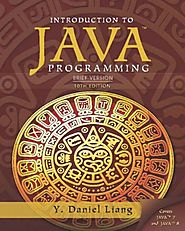
Daniel Liang teaches concepts of problem-solving and object-oriented programming using a fundamentals-first approach. Beginning programmers learn critical problem-solving techniques then move on to grasp the key concepts of object-oriented, GUI programming, advanced GUI and Web programming using Java. Liang approaches Java GUI programming using JavaFX, not only because JavaFX is much simpler for new Java programmers to learn and use but because it has replaced Swing as the new GUI tool for developing cross-platform-rich Internet applications on desktop computers, on hand-held devices, and on the Web. Additionally, for instructors, JavaFXprovides a better teaching tool for demonstrating object-oriented programming.
Teaching and Learning Experience
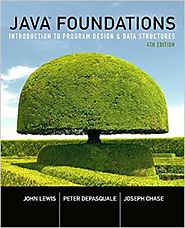
Java Foundations: Introduction to Program Design and Data Structures (4th Edition) [John Lewis, Peter DePasquale, Joe Chase] on Amazon.com. FREE shipping on qualifying offers.
A Concise, Comprehensive Approach to Java Programming
Java Foundations is a comprehensive textbook for introductory programming sequences. The versatile layout supports a two-or three-semester schedule and introduces you to the world of programming—from the basics
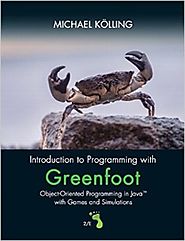
Introduction to Programming with Greenfoot: Object-Oriented Programming in Java with Games and Simulations (2nd Edition) [Michael Kolling] on Amazon.com. FREE shipping on qualifying offers.
For courses in programming and computer science.
Hands-on Programming with Greenfoot
Introduction to Programming with Greenfoot: Object-Oriented Programming in Java with Games and Simulations teaches the basics of Java computer programming languages in the context of Greenfoot. Readers are able to learn the general fundamentals and principles of programming by creating their very own fun and interesting games and simulations. Major concepts are conveyed in modern
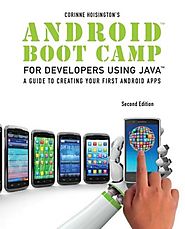
Gain a strong foundation in Java programming with the confidence and technical skills to build actual, successful mobile applications with ANDROID BOOT CAMP FOR DEVELOPERS USING JAVA™, COMPREHENSIVE: A BEGINNER'S GUIDE TO CREATING YOUR FIRST ANDROID APPS. Written by award-winning technology author Corinne Hoisington, this book prepares readers with a thorough introduction to both Java™ and the secrets to creating effective mobile applications. It's the ideal choice for readers who already have a little programming experience or are new to Java. The book offers a hands-on tutorial approach with clear, step-by-step instruction and numerous screen shots to guide readers through tasks efficiently. Learners gain a solid understanding of programming logic and Java tools for Android today and into the future.
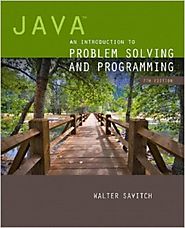
Java: An Introduction to Problem Solving and Programming, 7e, is ideal for introductory Computer Science courses using Java, and other introductory programming courses in departments of Computer Science, Computer Engineering, CIS, MIS, IT, and Business. It also serves as a useful Java fundamentals reference for programmers.
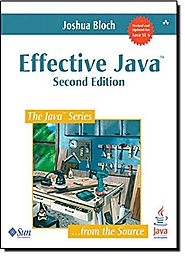
Each chapter in the book consists of several “items” presented in the form of a short, standalone essay that provides specific advice, insight into Java platform subtleties, and outstanding code examples. The comprehensive descriptions and explanations for each item illuminate what to do, what not to do, and why.
Highlights include:
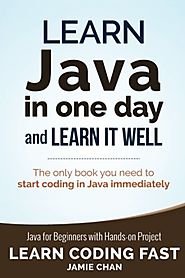
Java for Beginners
Complex concepts are broken down into simple steps to ensure that you can easily master the Java language even if you have never coded before.
Carefully Chosen Java Examples
Examples are carefully chosen to illustrate all concepts. In addition, the output for all examples are provided immediately so you do not have to wait till you have access to your computer to test the examples.
Careful selection of topics (Covers Java 8)
Topics are carefully selected to give you a broad exposure to Java, while not overwhelming you with information overload. These topics include object-oriented programming concepts, error handling techniques, file handling techniques and more. In addition, new features in Java (such as lambda expressions and default methods etc) are also covered so that you are always up to date with the latest advancement in the Java language.
Learn The Java Programming Language Fast
Concepts are presented in a "to-the-point" style to cater to the busy individual. You no longer have to endure boring and lengthy Java textbooks that simply puts you to sleep. With this book, you can learn Java fast and start coding immediately.
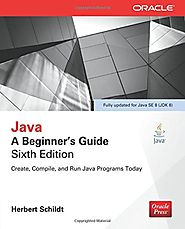
This Oracle Press resource also covers some of Java's more advanced features, including multithreaded programming, generics, and Swing. Of course, new Java SE 8 features such as lambda expressions and default interface methods are described. An introduction to JavaFX, Java's newest GUI, concludes this step-by-step tutorial.
Designed for Easy Learning:

By emphasizing the application of computer programming not only in success stories in the software industry but also in familiar scenarios in physical and biological science, engineering, and applied mathematics, Introduction to Programming in Java takes an interdisciplinary approach to teaching programming with the Java™ programming language.
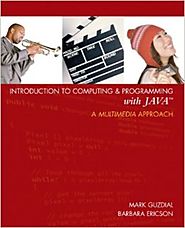
Introduction to Computing and Programming with Java: A Multimedia Approach [Mark J. Guzdial, Barbara Ericson] on Amazon.com. FREE shipping on qualifying offers. Mark Guzdial and Barb Ericson have a most effective method for teaching computing and Java programming in a context that readers find interesting: manipulating digital media. Readers get started right away by learning how to write programs that create interesting effects with sounds
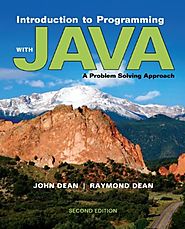
Introduction to Programming with Java: A Problem Solving Approach teaches the reader how to write programs using Java. It does so with a unique approach that combines fundamentals first with objects early. The book transitions smoothly through a carefully selected set of procedural programming fundamentals to object-oriented fundamentals. During this early transition and beyond, the book emphasizes problem solving. For example, Chapter 2 is devoted to algorithm development, Chapter 8 is devoted to program design, and problem-solving sections appear throughout the book.
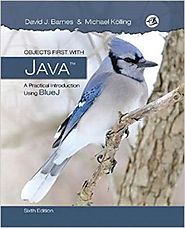
Objects First with Java: A Practical Introduction Using BlueJ (6th Edition) [David J. Barnes, Michael Kolling] on Amazon.com. FREE shipping on qualifying offers.
A Modern Approach to Functional Programming
Objects First with Java: A Practical Introduction is an introduction to object-oriented programming for beginners. The main focus of the book is general object-oriented and programming concepts from a software engineering perspective.
The first chapters are written for readers with no programming experience with later chapters being more suitable for advanced or professional programmers. The Java programming language and BlueJ—the Java development environment — are the two tools used throughout the book. BlueJ's clear visualization of classes and objects means that readers can immediately appreciate the differences between them and gain a much better understanding of the nature of an object than they would from simply reading source code. Unlike traditional textbooks

Beginning Programming with Java For Dummies, 4th Edition is a comprehensive guide to learning one of the most popular programming languages worldwide. This book covers basic development concepts and techniques through a Java lens. You'll learn what goes into a program, how to put the pieces together, how to deal with challenges, and how to make it work. The new Fourth Edition has been updated to align with Java 8, and includes new options for the latest tools and techniques.
Java is the predominant language used to program Android and cloud apps, and its popularity is surging as app demand rises. Whether you're just tooling around, or embarking on a career, Beginning Programming with Java For Dummies, 4th Edition is a great place to start. Step-by-step instruction, easy-to-read language, and quick navigation make this book the perfect resource for new programmers. You'll begin with the basics before moving into code, with simple, yet detailed explanations every step of the way. Topics include:
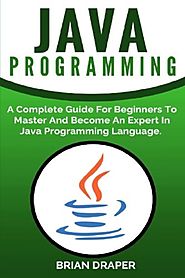
'Java Programming: A Complete Guide For Beginners To Master And Become An Expert In Java Programming Language' is a complete guide for beginners, covering the basic concepts and ideas, with simple to understand, follow and learn examples and explanations.
Java is one of the most easiest and powerful programming language to master, considering the fact that it is designed keeping simplicity in mind and can be used to develop almost all kinds of web applications including mobile games e.t.c. This makes Java Programming very interactive, robust and popular among computer programmers.
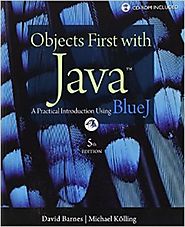
Objects First with Java: A Practical Introduction Using BlueJ (5th Edition) [David J. Barnes, Michael Kolling] on Amazon.com. FREE shipping on qualifying offers. Objects First with Java: A Practical Introduction Using BlueJ, 5e, is ideal for introductory courses in Java/Introduction to Programming and Object-Oriented Programming and for beginning programmers. This is the only introductory programming textbook that uses the BlueJ integrated development environment (IDE) to teach introductory and object-oriented programming principles using Java. Its close integration with the BlueJ development environment allows this book to focus on key aspects of object-oriented software development from day one. BlueJ's clear visualization of classes and objects means that readers can immediately appreciate the differences between them
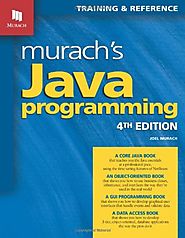
Developers often tell me they wish they'd found our Java book first, before spending time and money on others. They also say it's the book they turn to when they're getting ready to learn Android programming. Here are a few of the reasons why I believe this book will work equally well for you:

Android Programming: The Big Nerd Ranch Guide is an introductory Android book for programmers with Java experience.
Based on Big Nerd Ranch's popular Android Bootcamp course, this guide will lead you through the wilderness using hands-on example apps combined with clear explanations of key concepts and APIs. This book focuses on practical techniques for developing apps compatible with Android 4.1 (Jelly Bean) and up, including coverage of Lollipop and material design.
Write and run code every step of the way, creating apps that integrate with other Android apps, download and display pictures from the web, play sounds, and more. Each chapter and app has been designed and tested to provide the knowledge and experience you need to get started in Android development.
Big Nerd Ranch specializes in developing and designing innovative applications for clients around the world. Our experts teach others through our books, bootcamps, and onsite training. Whether it's Android, iOS, Ruby and Ruby on Rails, Cocoa, Mac OS X, JavaScript, HTML5 or UX/UI, we've got you covered.
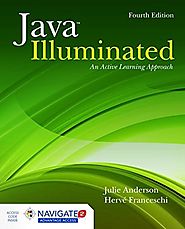
Each new print copy includes Navigate 2 Advantage Access that unlocks a comprehensive and interactive eBook, student practice activities and assessments, a full suite of instructor resources, and learning analytics reporting tools. Fully revised and updated to reflect the most recent features in Java 7 and Java 8, Java Illuminated, Fourth Edition is one of the most interactive and user-friendly texts available.
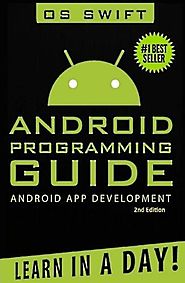
Learn to Program Android Apps - in Only a Day! Android: Programming Guide: Android App Development - Learn in a Day teaches you everything you need to become an Android App Developer from scratch. It explains how you can get started by installing Android Studio and learning to use the Android SDK Manager. Can you really create an app in just a day? Yes, you can! With Android: Programming Guide: Android App Development - Learn in a Day, you'll learn to create "OMG Andriod". This app is similar to the "Hello, World" program that many beginners create when learning new computer languages. Soon, you'll have your very own app that greets you by name! Can you create an app and try it out on your personal Android device? Absolutely! Learn to run your app on emulators and devices, and how to put personal touches on your app. You'll learn how to update your apps with the Android SDK Manager, use XML, and add buttons and listeners! Order your copy TODAY!

Yes, you can create your own apps for Android devices—and it’s easy to do. This extraordinary book introduces you to App Inventor 2, a powerful visual tool that lets anyone build apps. Learn App Inventor basics hands-on with step-by-step instructions for building more than a dozen fun projects, including a text answering machine app, a quiz app, and an app for finding your parked car!
The second half of the book features an Inventor’s Manual to help you understand the fundamentals of app building and computer science. App Inventor 2 makes an excellent textbook for beginners and experienced developers alike.
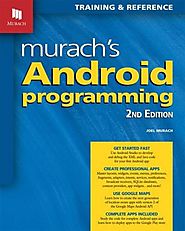
Want to learn how to develop Android apps? Then don't miss our new book: Murach's Android Programming (2nd Edition). It teaches you how to develop high-quality apps like the ones you can find in the Google Play store. The only prerequisite is a basic knowledge of Java. Everything else, including software installation, is covered.
To start, this book shows the Android Studio and Java skills you need to develop a Tip Calculator app for a smartphone or tablet. Then, it expands upon this app to show must-have Android skills such as working with layouts, widgets, events, themes, styles, menus, preferences, and fragments. Next, this book presents two more apps that illustrate Android skills programmers use every day, such as working with threads, files, adapters, intents, services, notifications, broadcast receivers, SQLite databases, content providers, and app widgets. Finally, this book presents an app that uses the Google Maps API and shows you how to submit your finished apps to the Google Play store.
The real-world apps let you see how the skills you're learning work together, and they illustrate how and when you'd use each skill. And all the content is presented in Murach's distinctive paired-pages style that developers find so clear and time-saving for both training and reference.
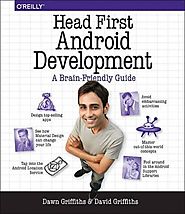
What will you learn from this book?
If you have an idea for a killer Android app, this book will help you build your first working application in a jiffy. You’ll learn hands-on how to structure your app, design interfaces, create a database, make your app work on various smartphones and tablets, and much more. It’s like having an experienced Android developer sitting right next to you! All you need is some Java know-how to get started.
Why does this book look so different?
Based on the latest research in cognitive science and learning theory, Head First Android Development uses a visually rich format to engage your mind, rather than a text-heavy approach that puts you to sleep. Why waste your time struggling with new concepts? This multi-sensory learning experience is designed for the way your brain really works.
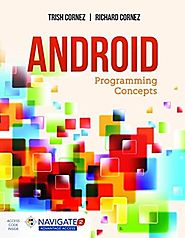
Each new print copy includes Navigate 2 Advantage Access that unlocks a complete eBook, Study Center, homework and Assessment Center, and a dashboard that reports actionable data. Using a hands-on, student-friendly approach, Android Programming Concepts provides a comprehensive foundation for the development of mobile applications for devices and tablets powered by Android. This text offers in-depth coverage of the topics outlined by the official Android developer API guides, leading a programmer with object oriented programming skills through the app development process. Each chapter features a collection of well-designed and classroom tested lab examples, providing an opportunity to apply specific Android concepts while supported by visual guides, explanations, and code listings.
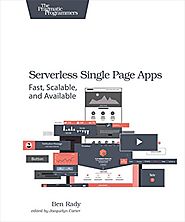
Don't waste your time building an application server. See how to build low-cost, low-maintenance, highly available, serverless single page web applications that scale into the millions of users at the click of a button. Quickly build reliable, well-tested single page apps that stay up and running 24/7 using Amazon Web Services. Avoid messing around with middle-tier infrastructure and get right to the web app your customers want.
You don't need to manage your own servers to build powerful web applications. This book will show you how to create a single page app that runs entirely on web services, scales to millions of users, and costs less per day than a cup of coffee.
Using a web browser, a prepared workspace, and your favorite editor, you'll build a complete single page web application, step by step. Learn the fundamental technologies behind modern single page apps, and use web standards to create lean web applications that can take advantage of the newest technologies. Deploy your application quickly using Amazon S3. Use Amazon Cognito to connect with providers like Google and Facebook to manage user identities. Read and write user data directly from the browser using DynamoDB, and build your own scalable custom microservices with Amazon Lambda.

With 75 in-depth chapters, over 800 pages and more than 47 example app projects (including the source code) this book provides everything you need to successfully develop and deploy Android apps using Android Studio.
Fully updated for Android Studio 2.2 and Android 7, the goal of this book is to teach the skills necessary to develop Android based applications using the Android Studio Integrated Development Environment (IDE) and the Android 7 Software Development Kit (SDK).
Beginning with the basics, this book provides an outline of the steps necessary to set up an Android development and testing environment. An overview of Android Studio is included covering areas such as tool windows, the code editor and the Layout Editor tool. An introduction to the architecture of Android is followed by an in-depth look at the design of Android applications and user interfaces using the Android Studio environment.
